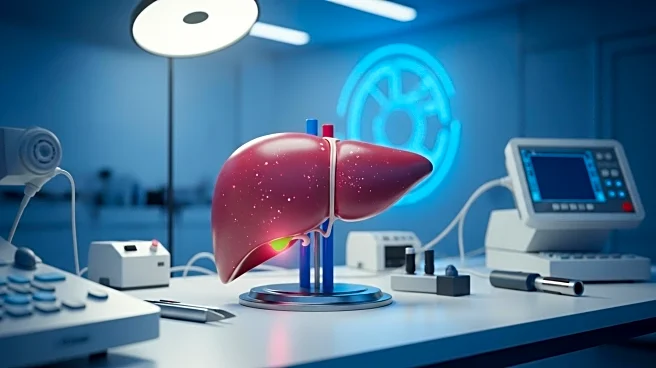What's Happening?
Pulse Biosciences, Inc. has announced the publication of a first-in-human clinical feasibility study in the Journal Thyroid, demonstrating the effectiveness of its Nanosecond Pulsed Field Ablation (nsPFA) technology for treating benign thyroid nodules. Conducted at the Ospedale del Mare center in Naples, Italy, the study assessed the safety and efficacy of nsPFA energy in reducing the size of symptomatic benign thyroid nodules. The study involved using the CellFX nsPFA Percutaneous Electrode System under ultrasound guidance, achieving up to a 93% reduction in nodule size within a year, with significant symptom relief observed as early as two weeks. The technology offers a non-thermal approach, preserving surrounding nerves and blood vessels, and providing a rapid reduction in nodule size compared to traditional methods like radiofrequency ablation (RFA).
Why It's Important?
The publication of this study is significant as it highlights a potential new treatment option for benign thyroid nodules, which could improve patient outcomes by offering a safer and more effective alternative to existing methods such as thyroidectomy or thermal ablation. The nsPFA technology's ability to rapidly reduce nodule size without causing fibrosis or scarring is particularly beneficial for patients, especially those with nodules located near sensitive areas. This advancement could lead to broader adoption of nsPFA technology in clinical settings, potentially transforming the standard of care for thyroid nodule treatment and reducing the need for more invasive procedures.
What's Next?
Following the promising results of this study, Pulse Biosciences may pursue further clinical trials to validate the efficacy and safety of nsPFA technology in larger patient populations. The company is also exploring the application of its technology in other medical fields, such as atrial fibrillation treatment and surgical soft tissue ablation. As the technology gains recognition, it could attract interest from healthcare providers and investors, potentially leading to partnerships or collaborations aimed at expanding its use in various medical applications.












